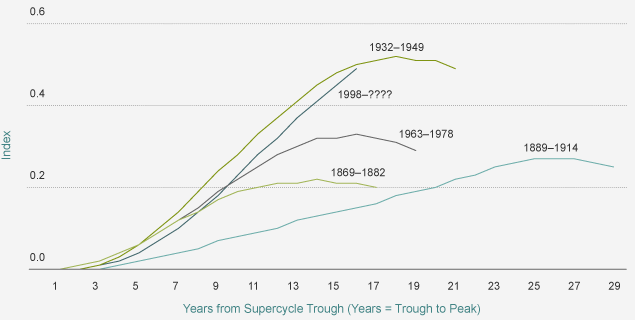The Commodity Supercycle and the Risks of "Dutch Disease"
Senior Economist—Asia Pacific
May 24, 2013
The commodity boom has been a key global macroeconomic and investment theme for more than a decade. Closely associated in many people’s minds with the growth of China, the boom now appears to be losing momentum, as prices of a number of commodities have weakened and China shows signs of rebalancing towards a less commodity-intensive phase of growth (Display).
Investors and policymakers are naturally wondering whether one of the great booms in history has begun to peak and, if so, what the implications might be.
Taking a macroeconomic approach, our research highlights a number of themes of which investors, in our view, should be aware:
- As China moves to a slower structural growth rate, the main surprises (or disappointments) in commodity demand in the future will come from elsewhere, such as India, Indonesia and other emerging markets.
- The importance of the supply side is beginning to assert itself, as can be seen in changes in price behaviour, such as price declines for some commodities and greater divergence between prices.
- This has important implications from the perspective of speed limits to growth and the prospects for food- and energy-driven inflation shocks.
- It also has implications at a country-by-country level from an investment perspective.
Not all commodity-exporting countries will be affected equally as the boom passes its peak, and investors should be on their guard against lumping them together in one bucket. To do so might result in missing the risks and opportunities that such countries may offer, individually and in relation to each other, as they move into the postboom phase of growth.
Commodity Supercycle Upswings Compared
